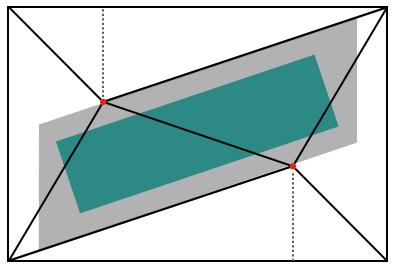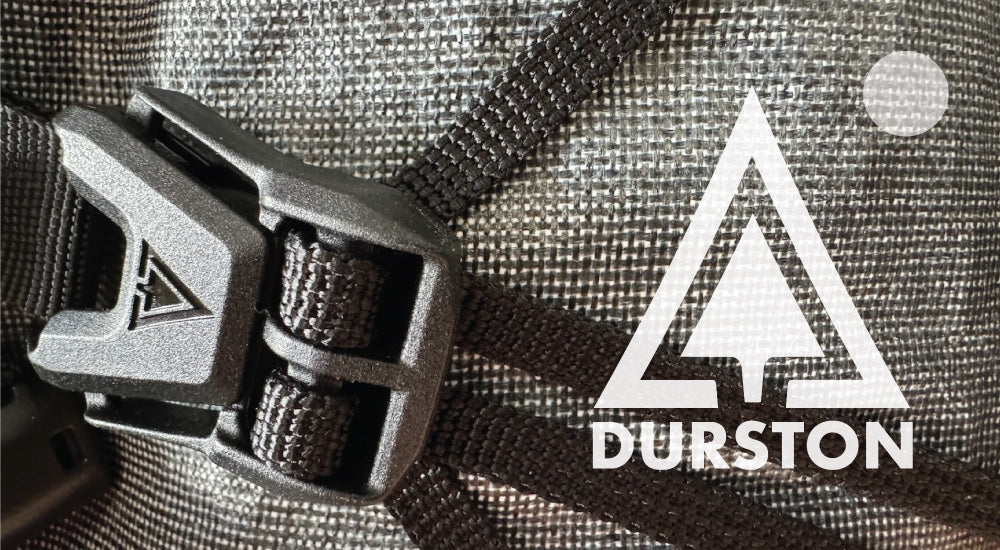PHILOSOPHY
Durston gear is grounded in five core philosophies:
1. First Principles Design
Most of the outdoor equipment on the market today is sub-optimal because the end result hasn’t been achieved by reasoning from first principles. With tents especially, a designer will start from some pre-existing basic shape, and then when shortcomings are identified, they will add on features to remedy that, rather than asking if they should be using that basic shape in the first place. The result is tents that are more complex, heavy, and failure-prone.
An excellent example of this is the proliferation of variants off of the classic single pole pyramid design. Single pole pyramid tents have an admirable simplicity to them but several major shortcomings too: limited headroom, unusable area around the low edges, a larger footprint, and the pole often interferes in the doorway or living space. If a designer is okay with these shortcomings in the end product, then a single-pole pyramid is a nice base geometry, but if a designer is not, they should look at other starting points.
Yet, instead of finding a base geometry that lends itself optimally to the desired end result, the ultralight world is filled with tent designs with piled post-hoc ideas onto the single-pole pyramid. We see struts and short poles being added at the peak to improve headroom, struts around the lower edges, mid-panel guyouts to pull out the walls for more volume, and the poles positioned off-center or angled to be somewhere less inconvenient. All of these strategies work to some extent, but they are suboptimal solutions because they are add-on solutions that are generally complicated, heavy, and failure-prone compared to what is possible.

A better approach is to reason from first principles to identify the ideal base geometry that minimizes the need to layer on post hoc solutions. With the X-Mid, I spent years mulling over these fundamentals, such as the relative merits of designing a tent with three, four, or five sides; and whether two poles are better than one pole plus struts. From this, the patented “double diagonal” X-Mid geometry (above) emerged which eliminates the need for guylines, avoids poles in the living space and doorways, and maximizes the volume: area ratio. For the geeks out there, I’ve written a much longer post explaining this.
This philosophy of reasoning every aspect from the first principles of geometry and physics is the best way to design gear and thus is the starting point for every piece of gear we release.
2. Coherent Design
Marketing departments for gear companies have been claiming for decades that their gear “makes no compromises.” Frankly, this couldn’t be further from the truth and demonstrates ignorance of how gear is designed because design is compromise. If you build a backpack with beefy fabrics, you’ve compromised on that item being lightweight, or if you build a tent with 1 pole instead of two you've compromised space for weight savings. Almost every design decision has pros and cons which makes it a compromise, so you should be wary of companies that claim they make none.
Compromise is inevitable, which is why the best possible approach is to acknowledge this and focus on a design that compromises consistently to achieve a coherent end product. On the market today there are fragile sleeping bags with overkill #7 zippers, and packs with huge 70L capacity yet a weak frame and no load lifters. These are not coherent designs, and neither are products where the designer tries to pile on features to make it work for every circumstance. I’ve been there when I tried to make a backpack suited for both lightweight hiking and mountaineering and the result was a pack that wasn’t optimal for either. Since then, I design gear where the intended use is clear from the outset, and every decision is made with that goal in mind. The best design is the one that consistently compromises towards a coherent goal.
3. Field Validation
It’s impossible to design excellent equipment without extensive field experience and testing because the challenges that gear can face in the wild are too diverse and unpredictable to foresee from a desk. Yet far too many outdoor products contain flaws that reveal a lack of real word validation. The most egregious I’ve seen is a rubber lid on a coffee mug that expands and leaks when exposed to the heat of a hot drink. Simply using the product once for its main use would have uncovered this flaw, yet years later this product remains on sale and unchanged. Many tents also contain oversights from a lack of field validation. That might be doors that channel rain into the tent, vents that get permanently wrinkled when packed, or door toggles that can’t be used with cold hands.
I (Dan) have extensive outdoor experience, including thru-hiking the Pacific Crest Trail (4200km, 2014), hiking the first yo-yo of the Great Divide Trail (2300km, 2017), setting the fastest known times on long routes, packrafting first descents, and completing numerous unique routes in challenging off-season conditions. These experiences inform each design and before any product is released, I use it in a wide range of conditions. That’s not to say I’ll think of every good idea, but you can be assured that our designs are informed by and extensively tested in a wide range of conditions. That might sound basic, but it’s surprisingly lacking across the industry.
4. Quality
We are obsessive about achieving the highest quality in both design and manufacturing. However, it’s easy for anyone to say this, so instead of believing our claims we point you towards the growing list of top awards our designs have gotten from respected outdoor gear publications such as BackpackingLight, Section Hiker, and OutdoorGear Lab. We also encourage you to investigate the build quality of our tents where you’ll find things like full double stitching even on minor details like around the fly hem – that is rarely done in the industry. That’s because we use the best factories in the world and then we go a step beyond and specify additional quality steps like overkill stitching that larger companies can’t justify. Beyond this, I ask you to look at the quality of the designs, the quality of our photos, and even the quality of the answers you are reading now, as evidence that quality permeates everything we do.
5. Community Engagement
While I'm proud of the gear I design, I'm also well aware that despite my best efforts I personally will not have every good idea, nor will I release products so perfect they can not be improved upon. A lot of good ideas come from our users and the broader outdoor community, which is why in my quest to make great gear I seek out, listen, appreciate, and implement suggestions from the community. That might be new ideas to make something even better or critical feedback on problems. All of this feedback gets filtered through our other core values of coherent and first principles design to identify improvements that will further our gear towards its core purpose.
Of course it is easy for any company to say they listen to users and incorporate their feedback, but you would be hard pressed to find another gear company that takes the active role we do. I (Dan) have responded to almost every review of a Durston product on the internet (whether it be on YouTube, gear review sites, blogs etc) and have over 20,000 gear related posts in online hiking communities like reddit, BackpackingLight, and Facebook where I tirelessly discuss the merits of my gear designs with others in the hiking community. More than just talk, we rapidly implement improvements. For example, our X-Mid 1 and 2 tents have been updated over 20 times in their first 4 years on the market (whereas tents rarely change more often than every 2-4 years). Our focus on constant improvement drives our factories a bit nuts but it is essential for taking our gear from good to great.
Thanks for your interest,
Dan


